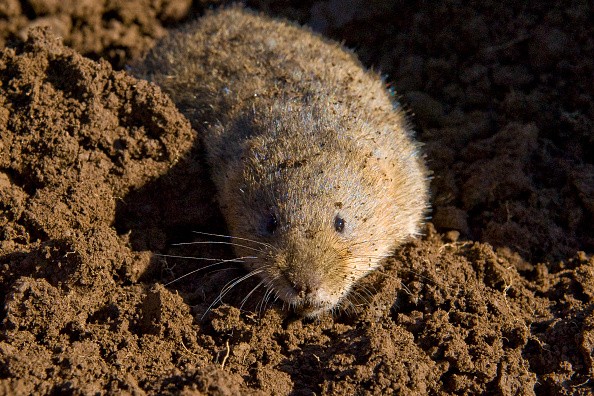A little mouse, according to a recent research, trims tall grasses to keep an eye on flying predators.
Shrikes hunt Brandt's voles, which live in grassland in Inner Mongolia, China.
The latest study, conducted by the Chinese Academy of Sciences' Institute of Zoology, Northeast Normal University of China, and the universities of Exeter and Florida, discovered that voles cut tall bunchgrass when shrikes are around.
The voles do not consume or use the bunchgrass; instead, they cut it to protect themselves, which is an example of "ecosystem engineering."
Vole's mechanism on detecting predators

According to ScienceDaily, Dr. Dirk Sanders of the Environment and Sustainability Institute at Exeter's Penryn Campus in Cornwall noted that when shrikes were present, the voles drastically reduced the volume of bunchgrass.
An activity like this is expensive in terms of energy for the voles, therefore there must be a lot of selection pressure' to do it. Cutting the grass must greatly enhance their odds of survival.
The researchers also investigated the impact of keeping birds at bay by erecting nets over specific regions.
When there were no shrikes in the sky, the voles stopped mowing the bunchgrass.
They frequently underestimate wild animals' abilities to respond to changes in their environment, according to Dr. Sanders.
Cutting grass to obtain a better view of the skies is likely seen as a better alternative for the vole than merely hiding in the grass.
This is due to the shrike's usage of bunchgrass as a perch when hunting for vole prey, as well as a location to store their captures, as per Dailymail.
Brandt's vole (Lasiopodomys brandtii) was studied because it is endemic to shrublands and grasslands in Russia, Mongolia, and northern China.
Also Read: Prairie Voles Prefer Crowded Quarters, Researchers Say
The assessment of L. brandtii and its abundance
The Brandt's vole lives in groups of close relatives, and each group digs a network of underground tunnels; nevertheless, they eat above ground.
According to Dr. Sanders, L. Brandtii voles prefer open spaces and avoid dense plant cover.
Shrikes, on the other hand, frequently perch on the branches and stems of bushes and long grasses and seek individual prey nearby.
The researchers conducted field surveys and experiments in a steppe grassland in Inner Mongolia to analyze the relationships between vole and bunchgrass abundance, as well as predator visitation, for the study.
In the purpose of the study, a predator's visit was defined as a bird resting on the surface or any of the plants inside a patch.
However, because it is difficult to recognize them in the wild, the researchers did not separate each shrike species.
In the presence of shrikes, the voles actively transformed the environment by chopping down big, unpleasant bunchgrass species (Achnatherum splendens).
This study, according to Dr. Zhibin Zhang of the State Key Laboratory of Integrated Management of Pest Insects and Rodents, Institute of Zoology, Chinese Academy of Sciences, "provides substantial evidence that animals may actively change their environment to reduce predation risk."
Dr. Zhiwei Zhong of Northeast Normal University remarked that the discovery might have implications for rat management in grazing area.
Keeping or producing these massive bunchgrasses may help to attract shrikes, hence lowering vole population density.
Related article: Prairie Voles Show Empathy For Stressed Relatives
© 2024 NatureWorldNews.com All rights reserved. Do not reproduce without permission.



![Climate Change is Reducing Dust Levels Worldwide as Arctic Temperature Warms [Study]](https://1471793142.rsc.cdn77.org/data/thumbs/full/70320/280/157/50/40/climate-change-is-reducing-dust-levels-worldwide-as-arctic-temperature-warms-study.jpg)

